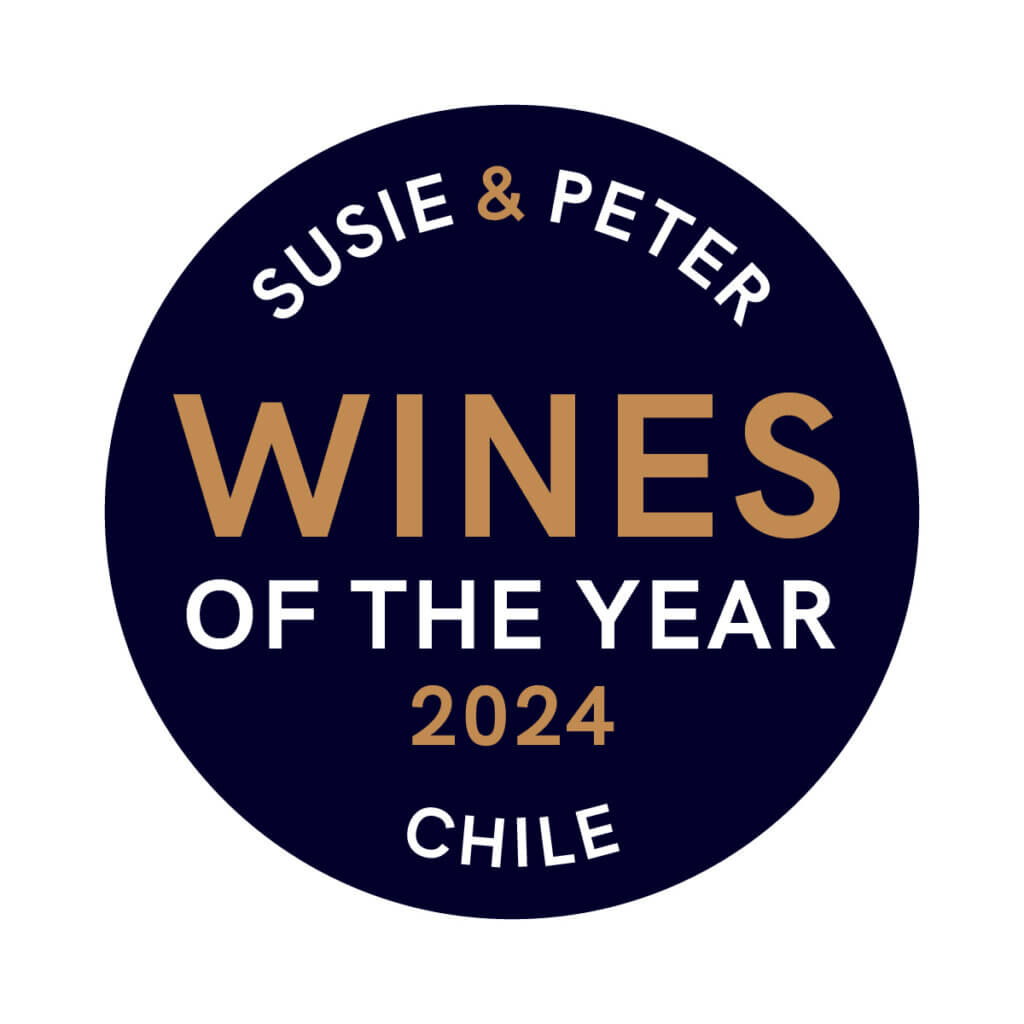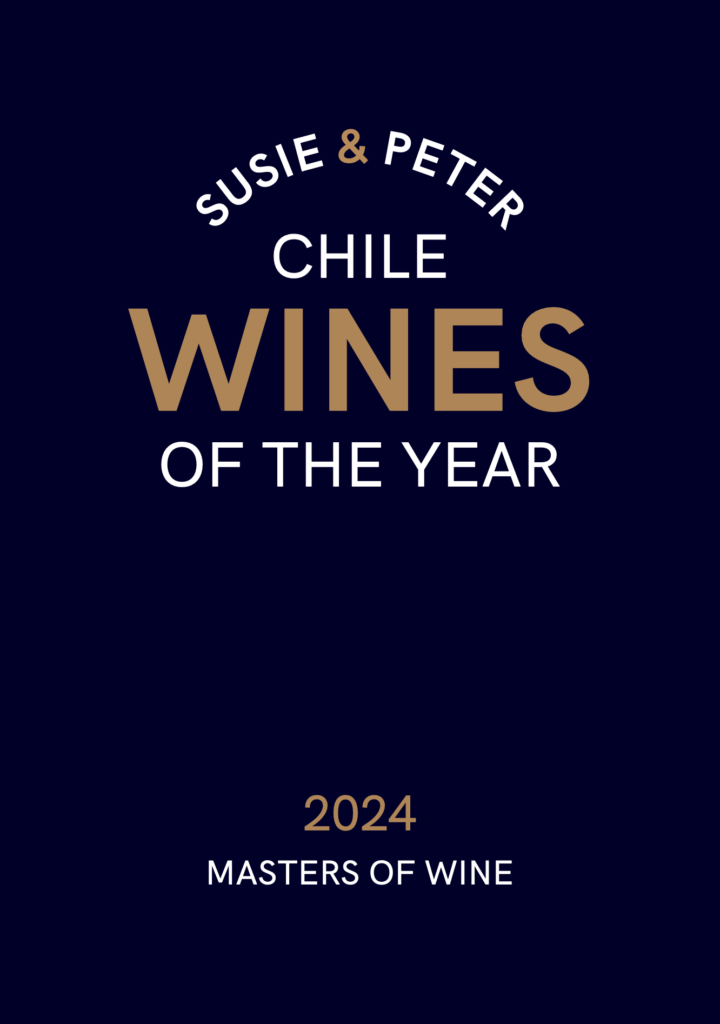- Chile Wines of the Year 2024
- Hunter Valley: History to High Jinks
- Life or Death? On Wine and Health
- Chinese Wine: What’s the Deal?
- Your Ultimate Guide To Wine Faults
- Portugal’s Great Whites
- The Vines of the Future
- WINES OF THE YEAR 2024
- Lessons in Wine Chemistry
- Don’t Know the Great Southern? You Should
- Margaret River Finds its Voice
- Why Wine Matters
- Appellation Marlborough Wine
- Wine in a Can – Sacré Bleu!
- RIDGE – The Insider’s Guide
- Do You Need More than One Wine Glass?
- Fake Wine: A Laughing Matter?
- News & Views 2025
- Battle of the Bubbles
- ‘Adrenaline rush’: Wine Auctions & Trends with iDealwine
- AO YUN – The Insider’s Guide
- Essex: Class in a Glass
- There’s Prosecco – and there’s Conegliano Valdobbiadene
Summary
It’s a biggie.
Our Chile Wines of the Year 2024 – a celebration and exploration of this slender South American nation’s wines.
And what’s coming up may surprise you. So if you think you know Chilean wine – be prepared to think again.
We discuss vineyards planted before the French revolution, sensational value Pinot Noir (the holy grail!), a Pinot Gris inspired by the great orange wines of Friuli, flor-aged Semillon, wines you ‘eat’ rather than drink and old-vine País made, ‘as if it were the finest Pinot Noir from Burgundy’.
We hear from Chilean wine luminaries including Felipe Marin, Ricardo Baettig, Ana María Cumsille, François Massoc, Eduardo Chadwick, Matías Ríos and Edgard Carter.
There’s plenty of opinion, insight, top tips. Even the odd ‘light-house wine’ and inflection point.
In case you’re wondering, in this programme we also explain what this Chile Wines of the Year thing is.
Essentially, we’ve chosen just over 100 wines to showcase just how diverse, delicious, fun, funky and fine modern Chilean wine is. We’ve also selected a few brilliant producers and wines for top awards
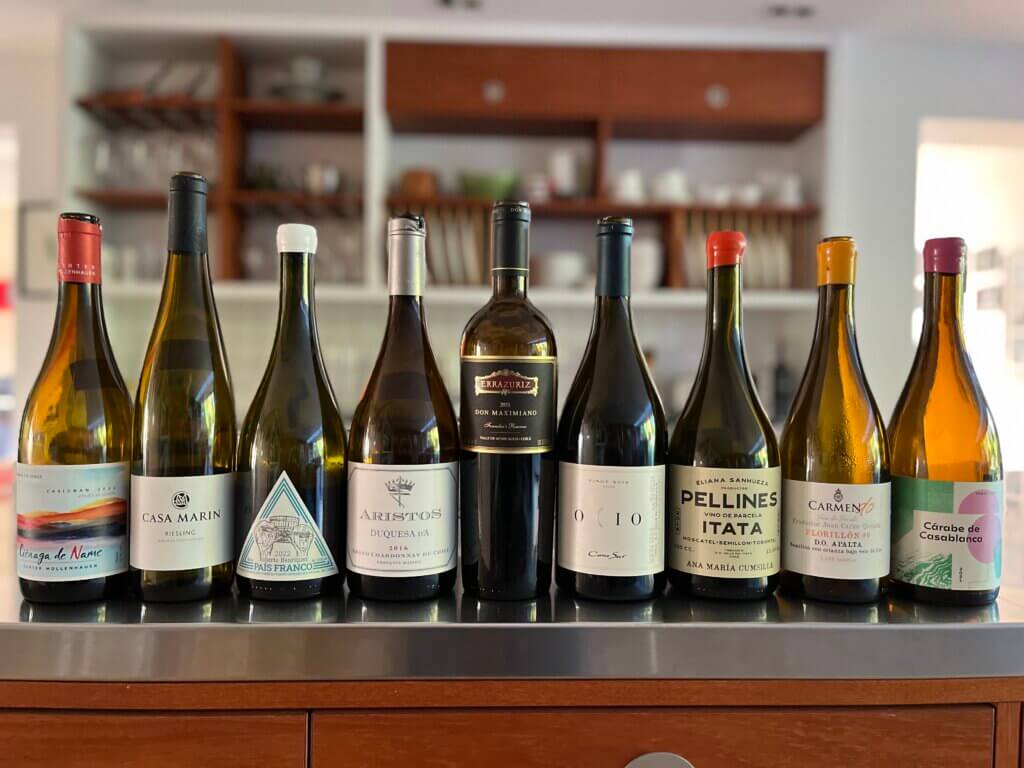
Oh, and we also blow our own trumpets a bit after this podcast WON THE 67 PALL MALL GLOBAL WINE COMMUNICATOR AWARD!!
This episode is produced in association with Wines of Chile.
Please do also check out our accompanying Chile Wines of the Year 2024 report, packed full of information, opinion, ratings and top tips, which is free to download below.
Starring
- Felipe Marin, Casa Marin
- Ricardo Baettig, Morandé and Atalalco
- Ana María Cumsille, Carmen
- François Massoc, Aristos and Massoc Frères
- Eduardo Chadwick, Viñedos Familia Chadwick
- Matías Ríos, Cono Sur
- Edgard Carter, Carter Mollenhauer
- Susie & Peter
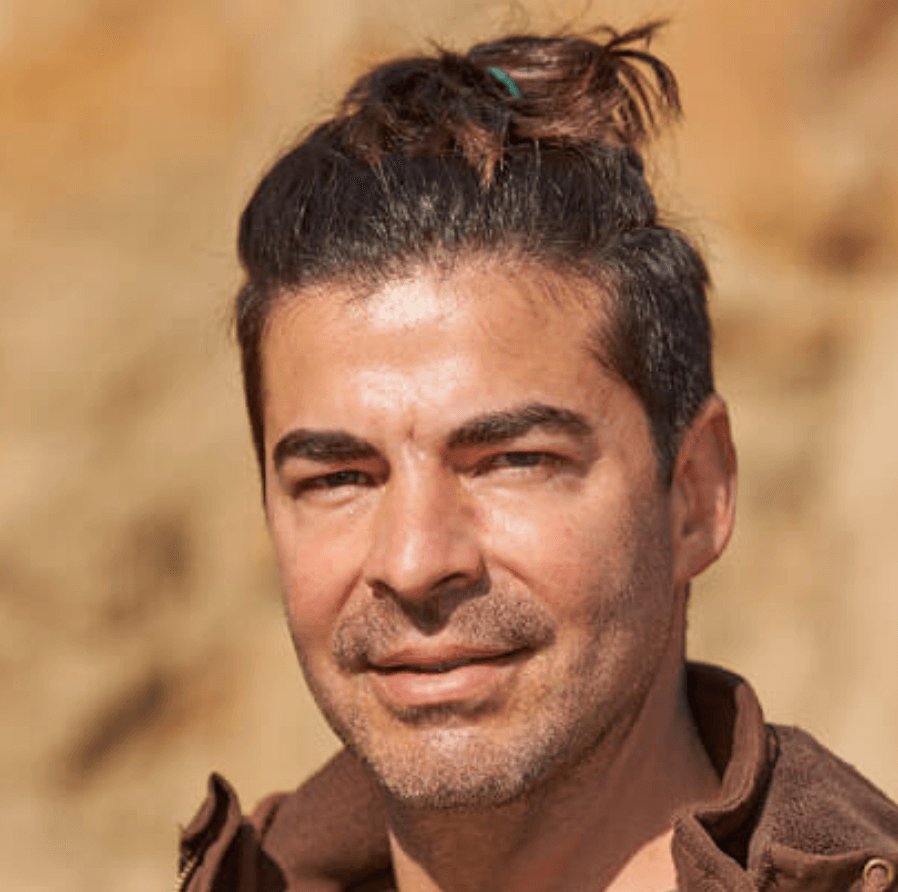
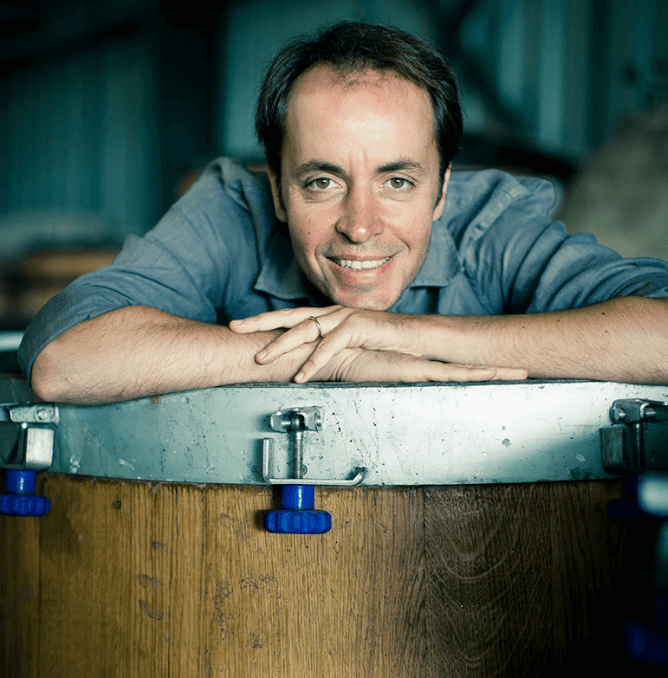
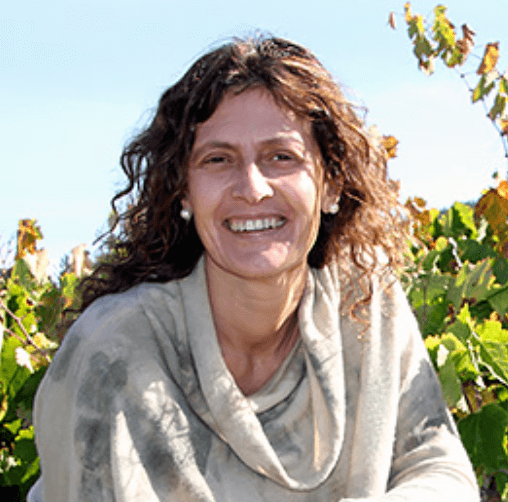
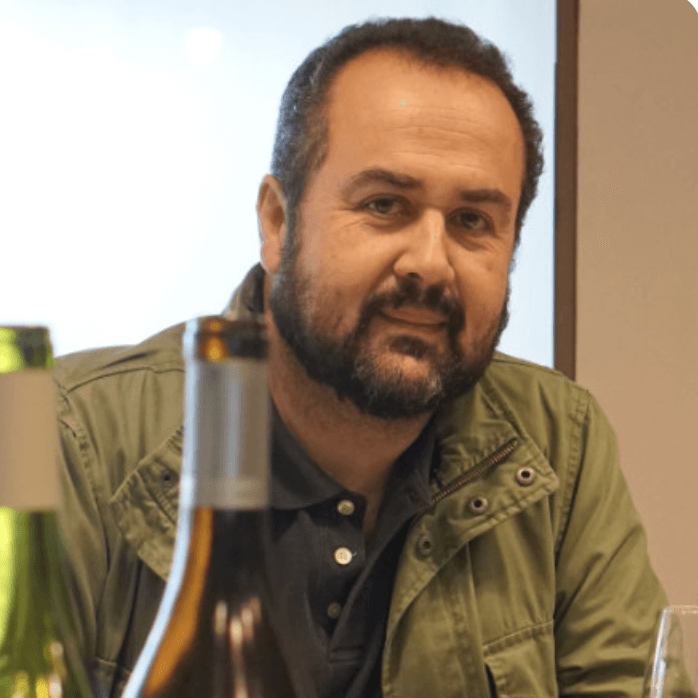
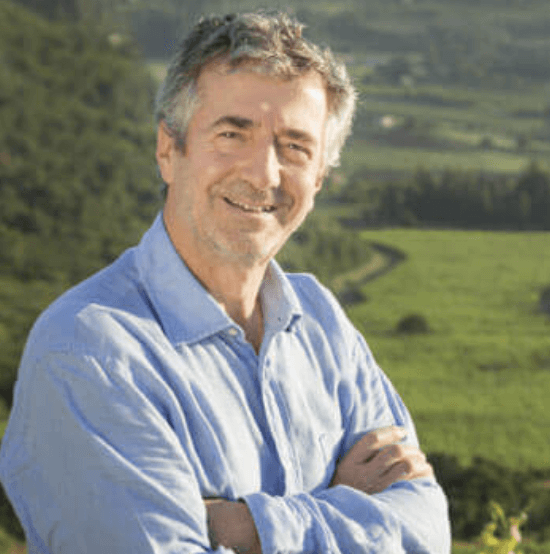

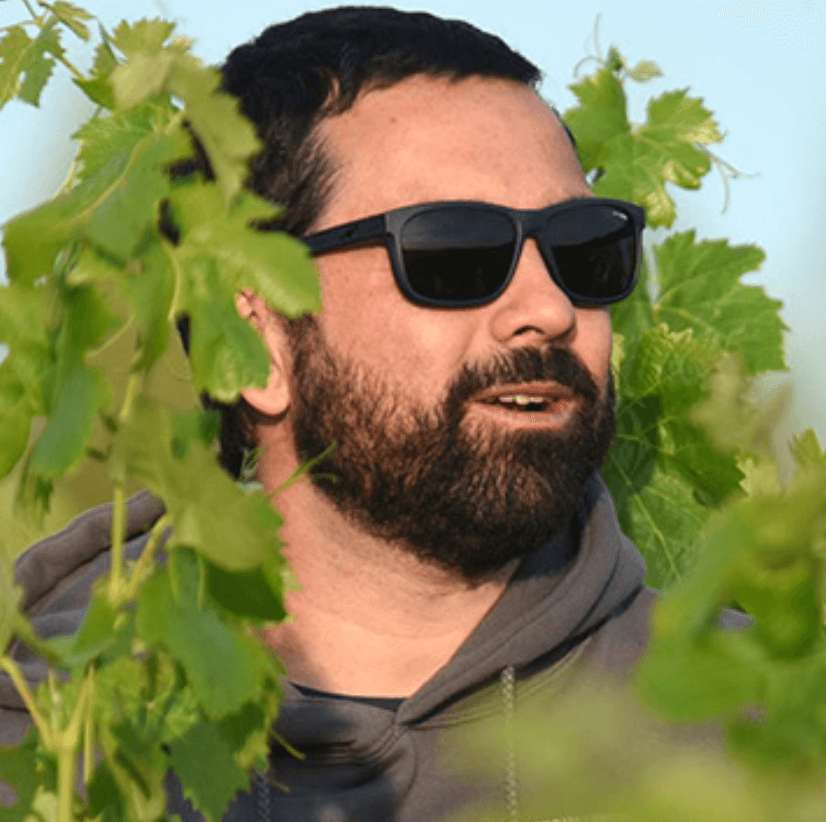
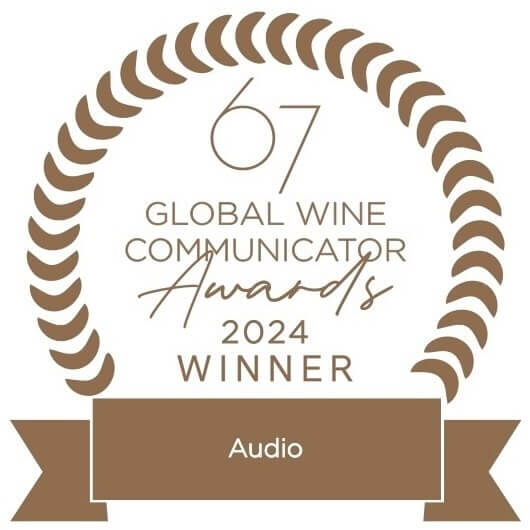
Report
At the heart of our Chile Wines of the Year initiative is an aim to showcase the very best of what modern Chilean wine has to offer. It’s not a reality you often get to see or experience in major markets outside Chile. But it’s so thrilling and we really wanted to share that.
So in June 2024 we called in a selection of quality wines and did an intensive tasting (arguments may have occurred – we couldn’t possibly comment – either way, this was a very involved and ultimately consensual selection from two Masters of Wine with different tastes but similar standards). We chose just over a hundred wines to be our Chile Wines of the Year 2024.
Beyond this, on the basis of the tasting we also assigned some top awards, from Best Producer and Best Winemaker to Top Red, Top White, Best Value Red, Best Value White, Red Innovation and White Discovery.
In our podcast we not only reveal these top awards but also hear from some of the brilliant people who made these outstanding wines, who paint an intriguing picture of modern Chilean wine as they go.
The podcast is a special edition programme, somewhat epic in length. But even then, we didn’t have space or time to detail all our Chile Wines of the Year. So we wrote a report where you can find a full listing of the wines, with detailed tasting notes for all the wines. There are even scores for those who value such things. It’s free to download via the link below (from 6am UK time Friday 13th September).
Chile Wines of the Year 2024 Report
Links
- Here’s a link to the 67 Pall Mall Global Wine Communicator Awards website so you can see all the amazing, original, brilliant work included in the final line-up. If you’ve really got too much time on your hands, you can see the video of the awards and us staggering up onto stage.
- Victoria Moore’s column in The Telegraph magazine (see below) is here: Chile’s White Wines are On Point Right Now
- You can find our podcast on all major audio players: Apple Podcasts, Spotify, Google, Amazon and beyond. If you’re on a mobile, the button below will redirect you automatically to this episode on an audio platform on your device. (If you’re on a PC or desktop, it will just return you to this page – in which case, get your phone out! Or find one of the above platforms on your browser.)
Press
After releasing our podcast and report, we organised a trade tasting and masterclass to showcase a selection of our Chilean Wines of the Year.
Victoria Moore kindly wrote it up in her Telegraph magazine column (as below), which was a fantastic endorsement. She wrote that our selection, ‘includes some gorgeous wines’ and, ‘It’s Chile’s white wines that feel most on point at the moment.’
She particularly recommends the Matetic Garnacha, Morandé Terrarum Semillon and Atacalco Pinot Gris, all of which are highlights in our Chile Wines of the Year.
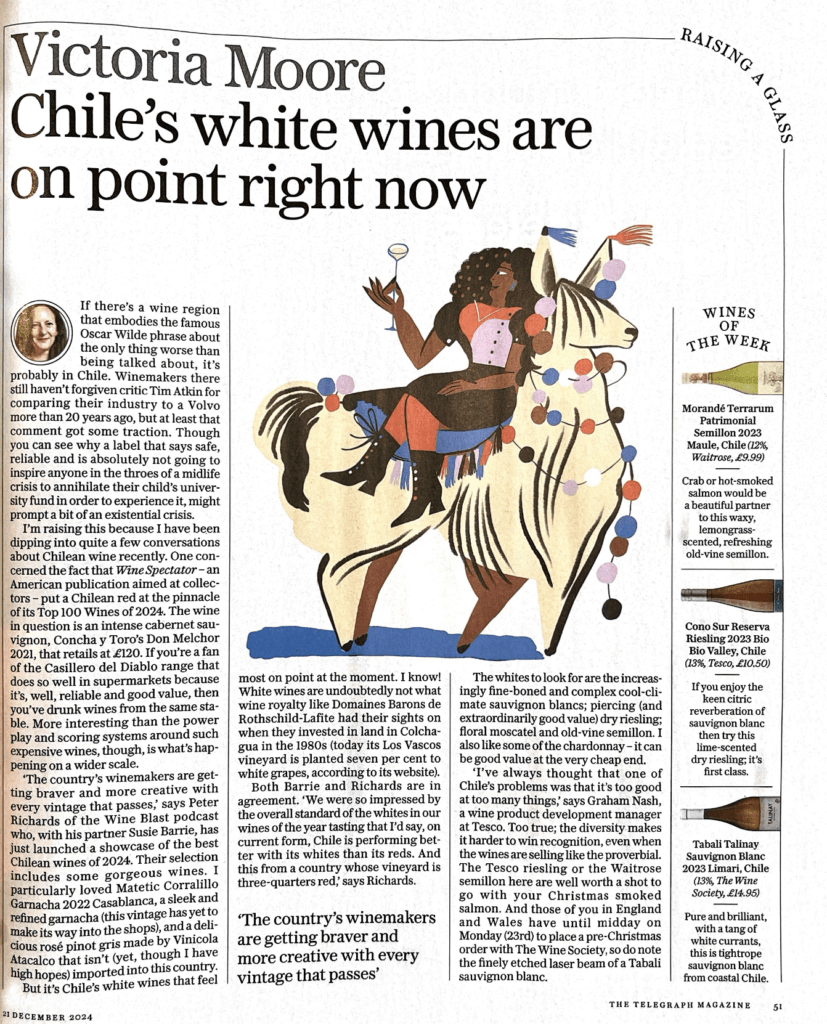
There then followed a series of pieces by Jancis Robinson MW.
The first was a piece on her website entitled Susie and Peter’s favourites from Chile, with a long list of wine recommendations taken from our tasting.
She writes: ‘It was wonderful to be presented with proof of the dynamism currently evident in Chile’s vineyards and cellars […] Some of the top reds, almost invariably Cabernet-based, now command three-figure prices per bottle. But there are still bargains aplenty, especially for Chile’s best white wines.’
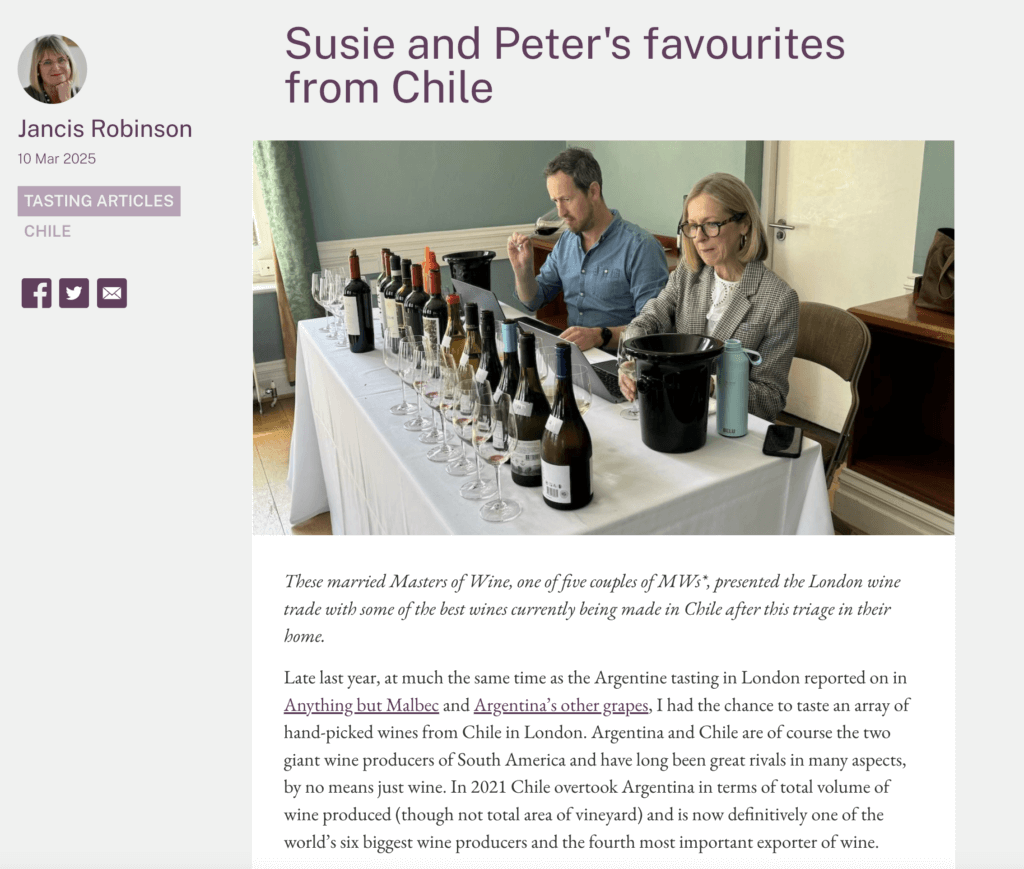
Shortly afterwards, Jancis wrote her Financial Times column on the same subject
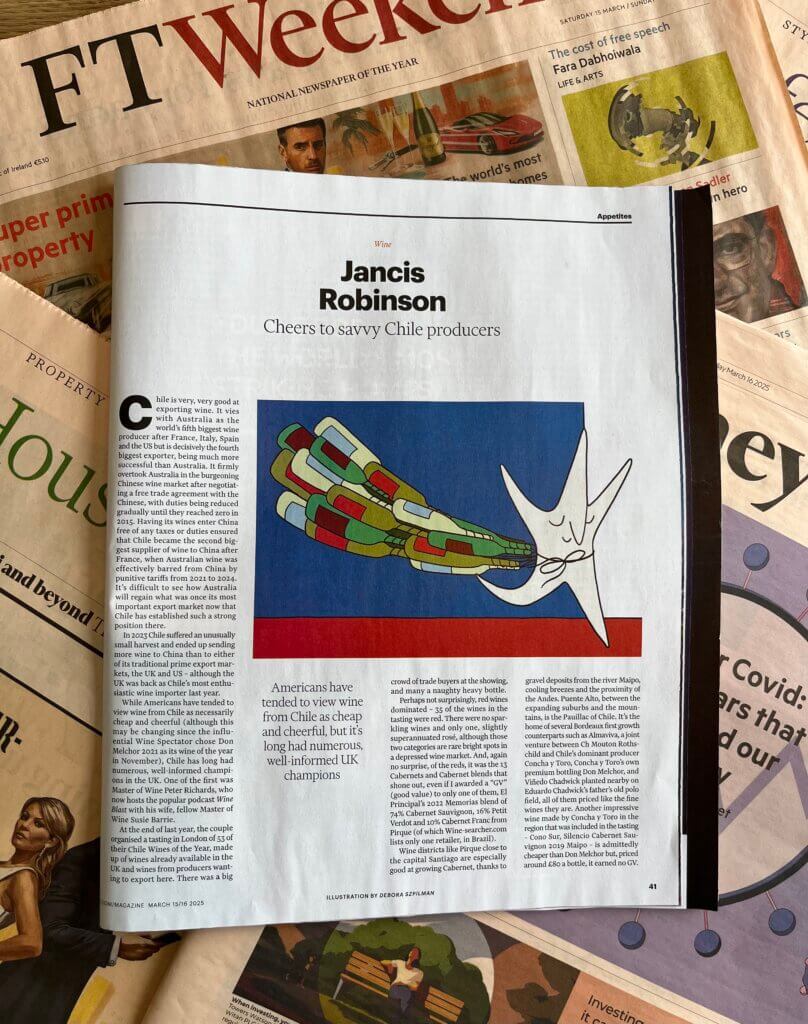
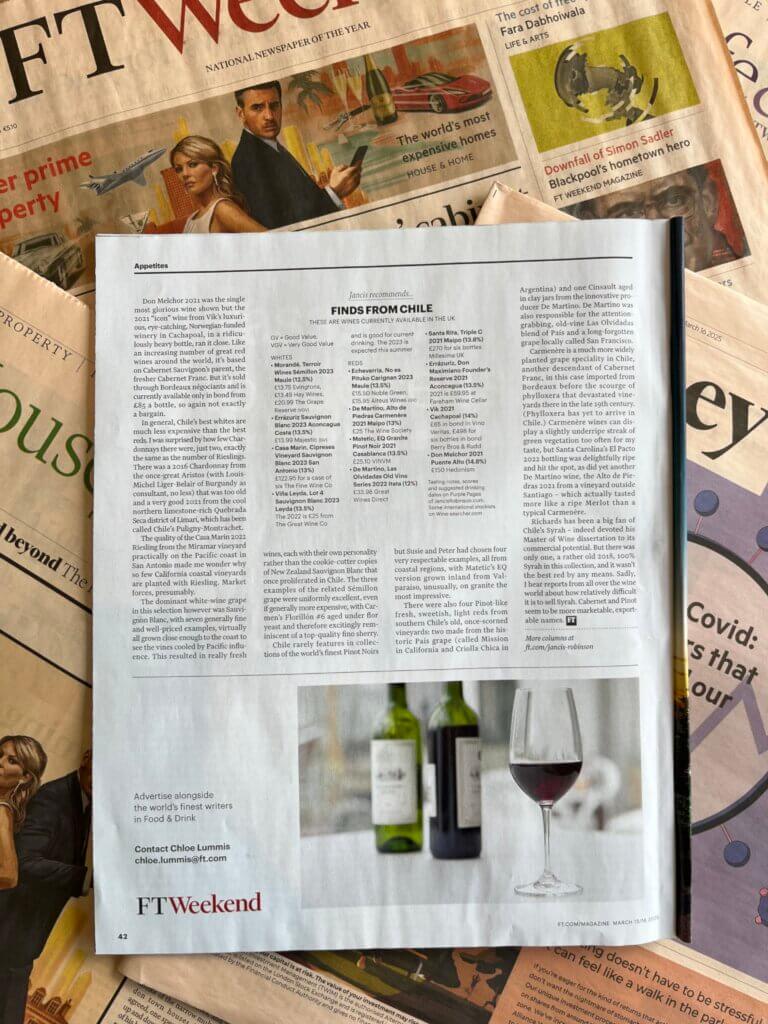
She also published a slightly longer version piece on her website, this time entitled Chile – Now a Fine Wine Producer. (This one is free access but the previous piece is behind a paywall – that said, we’d encourage any wine lover to take out a subscription, it’s well worth it.)
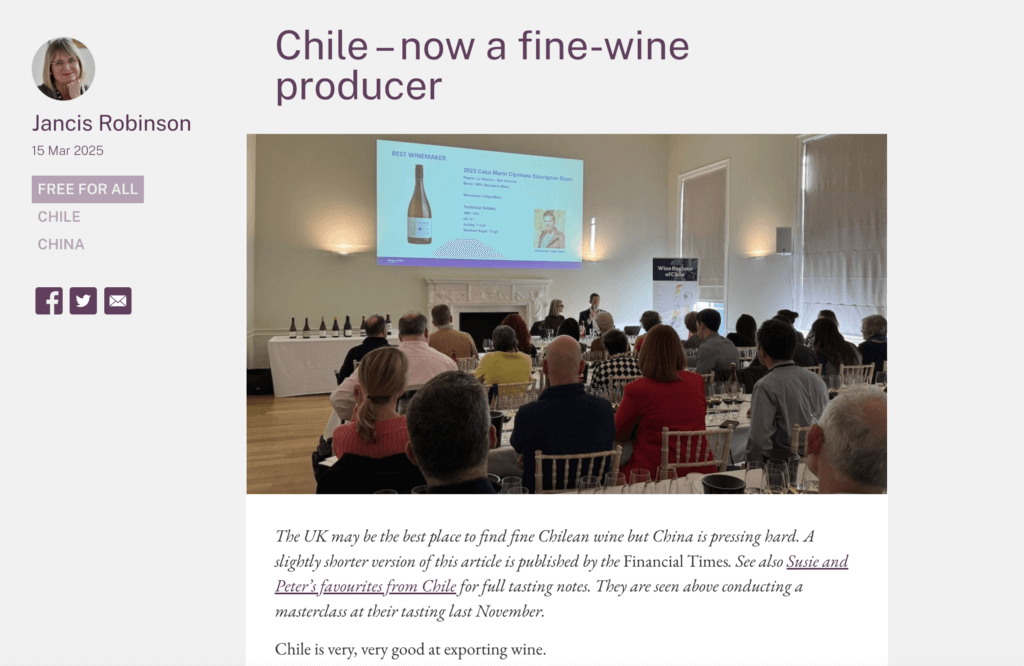
We feel very honoured to have this coverage – thank you Jancis and Victoria!
Get in Touch!
We love to hear from you.
You can send us an email. Or find us on social media (links on the footer below).
Or, better still, leave us a voice message via the magic of SpeakPipe:
Transcript
NB: this transcript is AI generated. It’s not perfect.
Susie: Hello and welcome to Wine Blast, as ever. I’m Susie. He’s Peter. We’re still Masters of Wine last time I checked. Anyway, this is the first show of season six, our 132nd episode to date. for what it’s worth. And it’s a special one.
Peter: Special in so many ways. just like me! Very special. I’ll come on to why that is in just a second. the show being special, not you. I think that was obvious. But first things first. This is a show about chilean wine and just how exciting, diverse, funky, fun and downright fine chilean wine is these days. if you think you know chilean wine you may need to think again after this one. Here’s a taster of what’s coming up.
Edgard Carter: Wine started in the 1550s in Chile, 474 years ago. So, yeah, we’re new world, but, I would like to talk about mezzo world also.
Eduardo Chadwick: We are now in a point of inflection. We have opened the doors for fine wines from Chile.
Ana Maria Cumsille: Chile is not only Cabernet, and Carmenere Today we are more fun. Today we are more exciting.
Susie: So there we heard from Edgard Carter, Eduardo Chadwick and Anna Maria Cumsille And we’ll be hearing more from them and other key chilean wine figures during the course of this programme, as well as recommending some epic wines, because this is our special edition Chilly Wines of the year, episode. But before we launch into that, we wanted to mention some good news. Didn’t we?
Peter: Did we? Yeah.
Susie: Didn’t we?
Peter: Did I miss something?
Susie: I don’t think you missed anything. I don’t think you did.
Peter: Look at your face is good. It was worth it. We have been over the moon, literally walking on sunshine for the past few days. after the podcast won at the 67 Pall Mall Global wine communicator awards, we were honoured to be nominated alongside such amazing and, you know, fresh, young, brilliant talent. we were blown away that Wine Blast won.
Susie: We were. We were. It was a big word. Yeah. So, thanks to 67 pall mall and the judges. But most of all, you know, thanks to you for tuning in and supporting us. we couldn’t do it without you. And we cannot tell you how much we appreciate you joining us on a regular basis to celebrate this wonderful thing that we all call wine One of the reasons we called the pod wine Blast is that we have a Blast doing it. We hope you do, too, listening to it. so thank you for being a part of it all. We cannot tell you how much it means to us.
Peter: Yeah, and, do cheque out the 67 pall mall awards website. There are some fantastic things there to enjoy, including other wine podcasts, video content, writing. It’s all very cool. We’ll put a link in our show notes, but enough tooting of trumpets. Probably think, let’s get on with the show. And I think we should start by explaining what exactly this chilly wines of the year, thing is.
Susie: Yeah, good point, good point. So regular listeners will know that our wines year has become a bit of a staple in the lineup, where we choose our favourite wines from the previous year. We like it because it generates a real debate. You know, we get lots of feedback about it and discussions ensue and at the end of the day, it’s all about celebrating great wine So we thought, why not extend this concept to specific regions, to be able to focus in a bit more and highlight the most exciting, cutting edge stuff from one particular place.
Peter: Chile was an obvious first destination. We taste a lot of chilean wine We’ve both visited a fair bit over the last 25 years. Plus, you know, I used to live and work there, speak the language. I’ve written two books and a Master of wine dissertation on the subject.
Susie: I think you’ve been called the world’s leading commentator on chilean wine haven’t you? At least that’s what our press release says that you wrote.
Peter: I’m blushing, I’m blushing. That’s all I can say. But, yeah, you know, Chile has been a specialist feel for a while. you know, but more than that, this Chilli wines of the year project was partly born out of frustration, wasn’t it? You know, that whenever we go to Chile and taste and travel and talk to producers, we see a really vibrant, funky, cool set of wines. But then when we get back here to a major market like the UK, that’s not the reality we see of chilean wine which is often, you know, really limited to pretty basic stuff, if we’re honest, you know, often cheap and cheerful cabernet or sauvignon blanc. And, you know, it’s just exasperating.
Susie: I mean, it is. Especially when the cool stuff can be such good value too. So it’s not even as if the cost is necessarily a barrier. you know, you’d actually think in a cost of living crisis, that chilean wine would frankly be taking off. So, yes, a certain frustration was at the root of this initiative.
00:05:00
Susie: so we wanted to try to change things by showcasing a range of super exciting chilean wines.
Peter: Yes. So we drew up a hit list of cool producers and wines. we worked with wines of Chile to call those in for a huge tasting we did in June 2024. it was really intense. We tasted and retasted. Some blind, some not. We tasted individually, then we tasted together. I think we argued.
Susie: We definitely argued quite. People will be pleased to hear this.
Peter: The top wines we retasted many times. and from that epic tasting, we chose just over 100 to be our Chile wines of the year 2024.
Susie: Yeah. So these wines are really special because, of course, all these wines were pre selected by us. And even then, a lot of excellent wines didn’t make the final cut. So these are wines that are well worth checking out. And then we also gave some top awards, didn’t we, based on the tasting.
Peter: Yeah. So this is the big reveal. Here we go. The big moment. And by the way, we’re also publishing our, full Chile wines of the year reports on our website, susyandpeter.com. it’s free to download and with tonnes of tasting notes and recommendations and information and stories. So do cheque that out. again, we’ll put a link in the show notes. we won’t have time to go through the full listing in this show, so that report has everything in an easy reference format.
Susie: Okay, so that’s the preface to our Chilli wines of the year. What we’re going to do in this episode is hear from key chilean wine figures about how they made their award winning wines and also get their top tips on what’s exciting, good value, what to buy right now, what the future holds. we’ve got some great stories and tips, including great value, pinot noir, the holy grail for wine lovers. And hopefully, through all this, we’re going to paint a vivid and intriguing picture of modern chilean wine and its rightful place in the world.
Peter: Now, we should, of course, thank wines of Chile for sponsoring this project and podcast, but, you know, as ever, all opinions and recommendations are entirely our own and unbiased. That’s a given on this podcast, as you all know very well by now. so how about we start with a very, very brief intro to Chilli and some opinions?
Susie: Okay? Let’s go. Chile is the fifth largest wine producer in the world. Its long wine history goes back to the 16th century, when spanish conquistadors brought vines to their newly conquered territories in South America. Chile is an extraordinarily long, thin country perched on the southwest frontier of South America. If you transposed it onto the northern hemisphere, it would reach from London to Luxor. In Egypt, this means it has huge geographic and climatic diversity, stretching as it does from the. The parched Atacama desert in the north to glaciers and icebergs in its extreme patagonian south.
Peter: I used to get called a, long streak of piss at school. You know, I think that Chile probably got the same treatment in the schoolyard. That’s all I can say.
Susie: I didn’t know.
Peter: That’s all I can say. There’s a kinship.
Susie: I thought you were going to say a string bean or something. Polite long streak of piss.
Peter: I’ve never got over it. Anyway, you know, after various political upheavals in the 20th century, Chile’s wine industry boomed in the 1990s, and it made its name on the back of cheap and cheerful wines made from well known grape varieties like cabernet sauvignon, merlot, Chardonnay, and sauvignon blanc. Since the turn of the millennium, however, there’s been much greater focus on expressing terroir, nuance and unique identity in the wines.
Susie: So that hopefully sets the scene for our tasting and our interviews. But just before we get into those, how about one headline opinion each, maybe to shake things up, get everyone thinking.
Peter: Okay, okay, great idea. You go first.
Susie: Okay, okay, right, fine. My idea. I’ll go first. well, I’ve got a heretical opinion. We like those. And it’s that on current form, Chile is performing better with its white wines than its reds.
Peter: And, this from a country whose vineyard is three quarters red.
Susie: But that’s almost the point, isn’t it? We assume redhead is Chili’s forte because it’s mostly planted to cabernet sauvignon and merlot and Carmen air and pais. And of course, its reds are, ah, very good. But actually, I think its whites are more exciting. You know, if I could have any chilean wine right now, for example, id Oscar a white.
Peter: That is very, very interesting. And you know what? I wouldnt entirely disagree, actually. especially given, you know, just thinking about it, just how delicious so many of the whites are, in our wines of the year, this year. Fair enough. Fair enough. Heretical fair.
Susie: Your turn.
Peter: Right. Okay.
Peter: Yeah. Okay. Well, I would say, again, thinking back to tasting, I’d say Chile needs to be more green. it’s probably one of the best, you know, the easiest places in the world to grow grapes. They call it a viticultural
00:10:00
Peter: paradise. They don’t even have really, phylloxera, this pest that kills vines all over the world. So a lot of their vines still grow on their own roots, which is unique and isn’t often said very much, you know? And yes, some of the wines are organic and biodynamic and regenerative, but they need to do more. They need to be more, they need to show more on this front. You know, one key thing here is they really need to bin the heavy bottles. Oh, my word. They are so bad for the planet in terms of carbon emissions and so unnecessary while they’re being shipped. They’re unnecessary. They give off all the wrong messages. Cool new icon wines come in lightweight bottles. Chilli. Ah, climate change is messing with everything, wine in particular. And Chile needs to get ahead of that one.
Susie: Yeah, I mean, you know, thinking back to the tasting, we did have far, far too many heavy bottles in our tasting, didn’t we?
Peter: Definitely.
Susie: And it’s not just damaging the planet, my shoulders, from lifting them up to pour the bloom and things. Anyway, that’s some context and opinion to kick us off. Let’s get on to our award winning interviewees. And first up we have Felipe Marin, winemaker at Casa Marin. Without doubt one of Chile’s very best wine producers. he had three wines of the year, suppressor Sauvignon blanc, Miramar Riesling and littoral Pinot noir, all outstanding. And as a result, he won the very prestigious best winemaker award.
Matías Ríos: Ah, yeah.
Peter: Well done, Felipe. It’s a nice story. So Felipe’s mum, Mariluz set up the winery. You know, at the time, everyone thought she was bonkers because she was planting in extreme coastal territory, steep hillsides just four kilometres from the Pacific shoreline. M coastal in Chile means cool because of the icy Humboldt current that flows up the Pacific coast like a sort of giant air con unit in the sea. but then these unbelievably vibrant, complex wines started emerging. I remember when the first ones came out and, of course, you know, it was a genius move. Philippe has been winemaker for a short while now and it’s so nice to see him emerging from, you know, the way from Marilu’s fearsome reputation to be his own man.
Susie: Yeah, absolutely. And so I asked him, actually, how he goes about making the unique wine that is his suppressus Sauvignon blanc.
Felipe Marin: I’ve learned through all these years, being a winemaker, in case of that, for me, the rule number one is to walk the vineyards, you know, to walk the vineyards and get to know your vines and, to really pick the grapes at the right timing and not to pick everything at once. You know, I like to pick some of the fruits of, very green and then fruit, at the right timing where I think is at its best. And then something later on, you know. And we have small, small tanks in. In the cellar, so I can keep things separately, you know. And then when it’s time to. To make the blend, I have a lot of material to make the blend and. And also there’s a percentage that goes into barrel. So what I do is try to minimise the, you know, when I make the wine I don’t add too many winemaking products, you know, I try to keep it as, ah, pure as possible and try to work, you know, with. With everything that I have with the leaves, with the barrels, with the picking time. And that’s how I create the blend, you know.
Susie: And similarly with the, riesling, you know, again, a highly individual style. How do you go about that one? Is it different to the sauvignon? Yeah.
Felipe Marin: Ah, well, yes, it’s different because I only have, 2 riesling. So what it’s been giving me a good confidence on making this wine It’s, my trips to Germany and get to know the wines and also the wines from Alsace and have a better understanding on how the wine has to be, you know, because, you know, in Chile we’re not known for rieslings and it’s been a long way. But, I would have to say that the vines, of this variety adapts very well with the loabarca climate, you know. So in these conditions, we keep a good rye acidity and that’s very much needed for this grape variety. So it’s been a key process, to understand the variety.
Susie: What would you say is most exciting in chilean wine right now?
Felipe Marin: I think that the whites in Chile, it’s something that people don’t know. People normally talk about reds, you know, reds about chile or good quality reds. But, on the wines, I think we have done good work. You know, there’s nice winemakers
00:15:00
Felipe Marin: that understand how to make a white wine
Susie: And are there particular grape varieties that you think are better in Chile than others? In terms of whites, I would say.
Felipe Marin: Number one for me, it’s sobium, blanc, clearly. it delivers that crisp, you know, that sense of place. however, I’ve started to see good Chardonnay, ah, projects, you know, in the south, in the north, you know, in the coast. So I think that, and it’s getting away from that bulky vanilla, Chardonnay. Now, what you can find is more steely mineral driven wines. And that’s what people like in a restaurant or, you know, it’s good. I’ve been seeing this in the past eight to six years and it’s in the right direction.
Susie: Felipe, huge congratulations. Our, ah, winemaker of the year 2024. And thank you. Thank you for talking to us.
Felipe Marin: I’m so honoured to see that. I mean, the team is going to be so excited about this and, I am so excited. And, I really wanted to thank you and Peter for your prize.
Peter: So he agrees with us about the whites being the most exciting thing about Chile right now. Boom.
Susie: Well, I guess he isn’t entirely unbiased, given most of his output is white. Yeah, I agree with him. You know, the quality and diversity of Sauvignon blanc, and particularly Chardonnay, is outstanding right now in Chile. our top white in the wines of the year, is a chardonnay. And there are so many beautifully fresh, savoury, complex chilean chardonnays. We had a huge array of different styles of Sauvignon blanc, too, from super restrained and cultured to full on, even orange. You know, no wonder plantings have doubled in the last 20 years. And there’s so much beyond those two varieties as well.
Peter: Yeah, well, like Riesling, as you were just discussing with Felipe, you know, and catamarine also make a lovely Sauvignon gris. so, you know. but it was interesting to hear him saying how important it is to walk the vineyards and keep things minimal in the winery. For me, those are two signs, really, of a top class winemaker when they focus on those kind of things. And also, you know, he said how valuable it is to travel and taste fine wine from all around the world. He mentioned Germany and Alsace. That’s something chilean winemakers never used to. Never used to travel, never used to taste all the top classics from around the world. Now they do, and it’s essential.
Susie: Totally agree. And you cannot make something unique until you know what else is out there. And talking of being out there and travelling, our next interviewee is Ricardo Baettig who studied and made wine in Italy as well as Chile. Now, in this interview, he references the wonderful, wonderful orange wines of Friuli in northeast Italy, which, of course, we explored at length in our episodes on Orange wine which are well worth a listen.
Peter: Good plug. Love that link. Now, Ricardo is head winemaker at Morande in Chile, a producer whose eponymous founder, Pablo Morandi, pioneered the cool climate Casablanca valley for crisp whites and elegant reds. Back in the sort of the eighties and nineties at a time when most chilean wine was confined to the sort of warm, fertile central valley. two morander wines were wines of the year. Ah, the spicy, peppery casatinta red blend of malbec, Syrah and Cabernet franc. And also the gorgeous terrarium patrimonial semillon, which picked up the best value white award.
Susie: But Ricciardo is a man of many talents, isn’t he? He also has his own side project called Atacalco with his friend Carlos Spoerer, making small productions, innovative wines. Their carabe deitata semi en moscatel blend was also a wine of the year, together with the carabe de Casablanca, a pinot gris made with skin contact, which also scooped the best rosé award. I asked Ricardo how and why he makes such a unique style of pinot gris.
Ricardo Baettig: Well, and we share, a pinot gris fermented with skins from Colli orientale del Friuli. And we love it. So when we start, making wines in Atacalco, we decided to make this kind of wine just for fun for us, and see how it performs. And, we love a lot, but the most important thing is many people love it. So we decided to put as, a proper wine in our portfolio. We produced four wines, but this one, in the beginning, wasn’t on purpose made for commercial, issues. And the result and the answers of the friends and people that tasted was so good that we decided to start selling. So come from our pleasure for wines from collier entale. My, experience in Italy at that time, and Carlos really
00:20:00
Ricardo Baettig: loved it when he used to, when he lived in New York. So he tastes a lot of wines like that. And, and this one was one of the, we enjoyed the most.
Susie: Well, we enjoyed it very much. So inspired by northern Italy. and yeah, no, we absolutely loved it. Just moving on to the semillon. How do you manage to make a semillon that’s so characterful but also great value? It’s not a variety people normally associate, particularly with Chile. but it is also the basis of your atacalico carabe de Itata, too, isn’t it? So you obviously like working with it.
Ricardo Baettig: Was the first atacalco we born as, growers or producers with this semillon from Itata. the family of Carlos come from this area of nyubli, and as you know, Susi, but not a lot of people knows the white grapes from Chile in the past, before Sauvignon blanc, before Chardonnay, was semi young, actually. So there’s quite a lot of old vine semillons in the drylands in the secondo areas, kind, of forgotten, because they are not in fashion, for many years. and I know semillon from many, many years ago. So I really enjoyed this. it’s capable to produce maybe not as aromatic wine as Sonjan blanc, but with a lot of texture and interesting mouth feels. old vines make the whole difference, not, irrigated bush pruning. These are lovely vineyards in the south of Chile. So we thought that we can show that to the consumers and that was the reason why we start making this semillon with the skins from mitata.
Susie: It’s very good. Very, very good. Let’s just move the morande, casatinta. Let’s move on to that. The red, you’ve got a blend here of malbec, Syrah and Cabernet franc, I think, from the cool climate Casablanca region. How does that one work? It’s quite an unusual red blend, isn’t it? What are you aiming for?
Ricardo Baettig: Yeah, it’s easier for us as a winemakers, to travel much more than 20 years ago. So we went, many times to Argentina, try malbecs. I really enjoyed the ones from the high altitude, gualtieri in general, the kind of floral character. So we planted in Casablanca, our coastal valley. But let’s say cold weather is not as, ah, cold as other new regions like, Maliek or something. So the malvey that we planted there shows, immediately, ah, sort of, violet jasmine when we are lucky, floral character that I enjoy a lot. And we thought in modern day, again, to try to create a path, a, show like, a lighthouse, to the chilean industries. It’s a big word. But Morande started doing his first wines in Casablanca when Casablanca doesn’t exist as a wine region. And we think that we can do the same or help to do the same with other growers to put Casablanca in the map as a, fine, top quality red wines too, with completely different approach. I mean, red fruit, floral, more elegant, lower alcohol. And that’s the effort and the aiming of, Casatinta to show a possibility of, make red wines from the coastal area that are completely different than the ones in the Andes or the central valley.
Susie: Just a few quick fire questions, about chilean wine in general. What do you say? What do you think is most exciting in chilean wine right now?
Ricardo Baettig: Of, many things, but the thing that I’m enjoying the most and, many, many people too. Our colleagues, is the new regions that we are exploring and now getting deeper on that. Huasco is one of the newest interesting wines, the one that we are doing also in Mayeco, Trigen, and also a little farther south, we’re doing things in Kautin, who’s a little 100 kilometres south than trigen. So these extreme regions, but with commercial purposes, I mean, not, not just trials, I mean, those are regions that are making truly unique and top quality wines that, to me is the things most important right now. And, it’s not that new. But, you know, Susie, that in Chile, we’re growing quite a lot now with old vines. That’s the other thing that I truly believe that is one of the top things on Chile right now.
Susie: And any particular varieties do you think there is more of, in terms of old vine?
Ricardo Baettig: Well, you know, the carignan for a while is doing good stuff, but, pais and Samson were learning a lot. If you compare, the pais
00:25:00
Ricardo Baettig: and Samson ten years ago now are much better because we understand better and manage better than the vineyards. But the thing that I’m more exciting right now myself, is the cabernet and more than 100 years old, dry farming that we found by chance in itata. And it’s a unique wine It’s fantastic.
Susie: And what would you say has been the biggest change in chilean wine over the last decade or so?
Ricardo Baettig: Yeah, many things, but in a way, the self confidence of growers, way makers, but growers in particular that realise that we have, very unique and interesting wines that would like to show. We would like to show to the, to the consumers. You know, Chileans are sometimes a little shy. So this change to me is positive for. For us to be secure or sure that we have quite interesting things. So this is, to me that the main. This change of mind is important and the most important thing right now.
Susie: So if you had an I. Insider tip when it comes to chilean wine something that maybe, you know, isn’t common knowledge, but might help people get the most out of their chilean wine what would it be? Yeah,
Ricardo Baettig: You know, that’s funny because I think people should know that Chile is a cold country. You know, we have a very hot summer, but dry. And people maybe because South America could think that Chiles are not tropical or very hot, but we’re, in a way, very cold country. And I invite the consumers to explore more in cold climate wines from the country.
Susie: And how do you see the future for chilean Wine?
Ricardo Baettig: Well, I see a, future divided in two. Both valid. I mean, both are important for the country. But the one that is more interesting to me is that I saw Chile with a lot of small, new, I would say new projects, but now they are realities. New growers, new producers. This is the most important thing to the midterm future right now.
Peter: I think that point about self confidence is so, so important to stress. You know, 20 years ago, a chilean winemaker, showed you his wines and would sort of meekly say, how should I change I them to make them better. Nowadays, they confidently explain why their wine is unique and how proud they are of it. And it’s fantastic to see that evolution.
Susie: But I think this has come about because of all these little side projects and small, productions that are so valuable in terms of showcasing the real potential of chilean wine beyond the mainstream. You know, some aren’t the most commercial, but I think Ricardo used the term and we could use it here. These are, lighthouse wines showing the way, proving what can be done so others can follow. And his pinot gris is just like that.
Peter: I agree. It’s a delicious wine isn’t it? I think it’s debatable whether it’s actually an orange wine or a rosé, but it looks like a rosé, it feels like a rosé, and we’ve given it a rosé award, so it’s damn well gonna be a rosé.
Susie: But I also think that that self confidence comes from travel and we heard it from Felipe. And of course, Ricardo has worked in Italy and talked about argentinian Malbec. And then you’ve got the value of the old vines, which he quite rightly points out. I mean, if you’re going to make something special and unique which speaks of its place, old vines are a great starting point.
Peter: Totally agree, totally agree. so we’re going to come on to talk about the likes of Pais and Carignan in due course. Meantime, just a quick word on Semillon. It’s not a variety closely associated with chile, but it used to be really quite widely planted. it’s also not easy to make into something exciting. So, you know, growers in Chile have been quietly ditching it over the years. You know, today’s Chilean Semillon vineyard is only a quarter of what it was in 1999. and that’s a tragedy because nowadays, you know, you’ve got these old vines in interesting places, people doing really, really intriguing things with them.
Susie: Like Ricardo.
Peter: Exactly. Yeah.
Susie: That Morande Semillon is so gorgeous and textured and such amazing value. Amazing value. And the carabe d’artata is great as well, based on semillon. Yeah, we need another campaign, I think. Save the SEM.
Peter: Yes.
Susie: I can feel a t shirt coming on. Once again, affirmative action.
Peter: Love it. Save the SEM. Make me. I’ll take a batch. and as a final comment, you know, he did say Chile’s a cold country, making elegant, cool climate wines. Again, tying in with our theme of exciting whites, you know, an increasing finesse in the wine Wines. Right, time to take a breath. coming up, we have some more incisive opinion and delicious wines. To recap. So far, Chile is defying stereotypes, from coastal Riesling to skin contact, pinot
00:30:00
Peter: gris and old vine. Semillon, its whites are, arguably its strongest suit on current form. And a newfound self confidence amongst growers is seeing ever more individual, refined wines being made. Chilean wine in short, is evolving fast.
Susie: And that brings us on nicely to our next interviewee, Anna Maria Cumsille A bit like Ricardo Baettig Anna Maria wears two hats. On the one hand, she’s head winemaker at Vinya Carmen, one of Chile’s oldest wine producers, which has had a new lease of life lately. Testament to which is their pungent, saline, sherry like wine d o Florion. Which one are, white innovation award.
Peter: But she also makes, her own wines in the far south, including the cypress malbec from ancient vines, and her long aged Pellines moscatel Semillon torrentel blend. Both are, wines of the year, but the latter also bagged white discovery.
Susie: I started by asking her about her malbec, a grape variety we associate more closely with argentina or cahon in France. So how does she make such a good one in Chile?
Ana Maria Cumsille: This Malbec is from Itata. like all my wines are from itata. But the particular thing, it’s a very old vines. The vines have, I think, at least 200 years old. Many years ago, I saw this vineyard and I want to vinificated, but I haven’t the grapes. And for many years, I tried to buy these grapes because comes from a small producer. Ah, like his name is Nelson Garcia. I put the name in the label and, finally I get these grapes. and, I think that the success in this wine is the grapes, really. It’s a wonderful vineyard, very old vines. It’s from the, we call secondo Costero, this part of the region, because it doesn’t have the irrigation. And the grapes are really fantastic. And I really, I try only the vinification is very traditional. I try dong minimal. The minimal intervention in the vinification, really. I try to express the terroir. I try to express itata, I try to express the grapes, finally. They are fantastic. It’s very. It’s a minimal intervention.
Susie: Well, it’s minimal intervention, maximum impact, because it’s a delicious wine Now, just moving on to your intriguing blend of moscatel semillon torrentel. That’s got a bit of age. It’s the 2018 vintage from Itata. Just tell me a little bit about that blend and the idea behind it.
Ana Maria Cumsille: Yes. This wine start oa, experimentation. I. When I think in white, in itata, I. When I think in, in wines, in white wines like this, all the time in itata, the wines, the white wines was made with the skin and identificate every variety separate. I, Moscatel, delejandria, semillon and Torontel. And I made the skin contact for eight months and then, I separate the skin from the wine and I put in all barrels for four years. I wanted to make, a white, but make like a, red wine
Susie: Well, it’s intriguing. It really is. And fascinating, but so is the final wine So the Carmen Florian. So this is quite unique, sort of almost shockingly characterful. reminiscent of kind of a fino sherry or a jura wine that’s matured under flor. but of course, it’s made from semillon in a palta. What was your inspiration?
Ana Maria Cumsille: And, this is a very old vineyard also, I think the semillon, it’s a little neutral variety and always need, a little, some technical beneficiation in order to have more character in Semillon. And I feel the floor in Semillon. It’s very good because it gives to the wine a, special character. Very strong, very. And I think for this, we keep this wine for
00:35:00
Ana Maria Cumsille: twelve months in floral. And that gives to the wine a very, very special, structure, very special character, very vertical wine high acidity, nice, balance in and all the, all the characteristics the wines, make with flour. We want to make something really different.
Susie: It is definitely different. And I absolutely, we both absolutely loved it. What would you say is most exciting right now about chilean Wine?
Ana Maria Cumsille: I think the last year, the most exciting things are the diversity. Today you can find a lot of terroir in different place, to the north, to the south coast, Cordillera. And, you can find a lot of different wines. Chile is not all, is not only Cabernet and Carmen, they are fantastic. But today we are more fun. Today, we are more exciting. I think we can. Different wines, different expressions. And another thing, I think, is the development of the small project. Many of them made for winemakers, and they made different things. Me also, we want to make different wines, different expressions, the wines more exciting, sometimes not very commercial wines, but, very good wines.
Susie: And what should people be looking to buy?
Ana Maria Cumsille: I think Chile, it’s very strong in Cabernet Sauvignon also. But today, if you want to know Chile, you have to taste wines. For example, from Limadiv, from Huasco, from Trien itata, from maule in Carmen. We just, release spumante from chilo eggs. That is very new and very exciting. Sparkling pinot noir.
Susie: Fabulous. Anna Maria. Ah, huge congratulations yet again. And thank you so much.
Ana Maria Cumsille: You’re welcome. You’re welcome. I’m very happy, very, very happy with the results, really.
Peter: So a bit of a scoop there on their new fizz from Chiloé That’s very exciting. Totally off the charts in terms of the chilean wine map. Extreme Southerly territory. We did actually talk about that area in our, last episode on Chile, back in 2020. Chile gets cool, after I visited the area. It’s stunning. but it’s a great example of what she’s talking about. Innovative, small production wines that are really exciting.
Susie: Yeah, yeah. She also, of course, talks about pushing back the boundaries of chilean wine territory, you know, expressing tewa old vines. And her attata wines really are, brilliant showcases for the region. They’re full of character, but also well made, really fine wines.
Peter: Yeah. You know, Southern Chile comes up a lot in this episode. and in the wines of the year, you know, for a long time in Chile, the south was. Was just overlooked as sexier places. And varieties like Cabernet from Maipo, you know, were championed. But. But in the last decade, the south, which is cooler and rainier, so naturally makes for more elegant wines. Plus, you know, it’s got this wealth of old vine history has really risen in prominence. Been great to see, you know, largely off the back of forward thinking winemakers like Anna Maria working hard to make, you know, superb small production wines down there.
Susie: Yeah. And the tartar has many things planted. But I think on the subject of Moscatel, what’s interesting is the way Anna Maria is working to tame those. Those vivid aromatics Moscatel can have and maximise its palate texture, you know, by blending, by skin contact, by long ageing before release. And if you add to that, the natural acidity and mineralization that old vine, Moscatel from ettata, can have. It’s. It’s a winning formula.
Peter: So. So Moscatel is quite widely, widely planted in the south, along with things like pais, these older vines. And it’s really interesting how she’s working to make it more complex and interesting. I completely agree. As for the. Those malbec vines, 200 years old, you know, it’s hard not to see why chilean winemakers are saying, look, you know, we’re not just about cheap and cheerful wine
Susie: That’s probably only.
Peter: We have importance, things to say and important wines for you to try, you know? My word.
Susie: Now, someone else who’s focused on Itata is Francois Massoc. He’s a chilean winemaker with french heritage who studied and worked in France and also Israel before settling back in Chile. He now owns a winery. He calls it an atelier, in Itata, making wines for many other people, as well as his own Massoc frere brand, two wines from which grand Pais and Le Mousquetel are wines of the year. he also makes crazy stuff like fortified wine great
00:40:00
Susie: brandy, and a herbal liqueur called Elixir. Finally, I just mention he works closely with his wife.
Peter: Yeah, he must be mad. Sorry, did I say mad? I didn’t say mad. I meant inspired. Inspired. That’s what I didn’t come out right. Sorry. Maybe I just thought I said what? I think you’re treading on very, very special talent. Francois, you know, he just totally breaks the mould when it comes to chilean wine He’s intuitive, he’s brave, he’s emotional, he’s hugely collaborative. You know, his partnership with his wife, Noel, is brilliant.
Susie: Is it, just like Hart? Good.
Peter: I’d like to.
Susie: Excellent.
Peter: Maybe I’ll do some damage repair after this. Glass of champagne. Glass of fizz. anyway, lots of sparkling Chile away. Anyway, you know, he’s a guiding light, Francois, to so many others in the chilean wine community. That’s great to see. But beyond that, you know, he also makes the Aristos brand, which he originally set up with well known burgundian producer Louis Michel Liger Belair, two chardonnays from which are wines of the year, and one, the Duquesne d’art 2016.
Susie: Is our top white, and it is staggeringly beautiful. You can make everything up to me with a glass or two of that done right.
Peter: If only everything in life is so easy. Anyway, I completely agree. It is the most, most stunning wine but let’s hear from Francois, just by way of preface, Aubert de Vilaine is the co owner and longtime custodian of Domendila Romani Conti, perhaps Burgundy’s most iconic estate. And Mounir sauma is also a supremely gifted burgundian winemaker. And we featured him on our, Burgundy episode back in 2021. that was really fun. But anyway, I asked Francois, what’s his secret when it comes to making exceptional chardonnay?
Francois Massoc: Honestly, there’s no secret. I’m not a brilliant guy. I’m just a good worker. That’s maybe my only talent. I have a big capacity to work. I learn in France from the best. I have an event. Nothing. I just try to keep humble and to be honest, with what, every year, the grapes give me. We believe in what we do. Every year we try to improve and to be as accurate, as clean as it’s possible. That’s no more secret than that, that hard work. I’m very lucky, as you are, to work with my wife. And, people ask me that it has to be very complex. But we work very good. She’s very professional. She tastes wonderfully. And, that’s another big thing. She gave me a lot of rest, a lot of peace and, confidence to continue the path that we choose.
Peter: So I’d like to ask you a bit more about that. That’s really intriguing. Tell us a little bit, how does that work and how does that inform your approach as a winemaker in, burgundy?
Francois Massoc: One person, when I was younger, and then I, as any young, when you finish the university, you feel that you can eat the world, that you can know a lot of things. One day, I was talking with someone that has a big influence in me. for example, Monsieur de Vilain, once, we were discussing how Pinot Noir has to be done, and I was talking about pirard montage, he told me, no, you need to take your time. Be careful of what do you want to extract, because you can get it. So it’s like, go slow, take your time, see? Taste. Some years, you’re going to have great things. Other years, not. So try to do the best that every year can offer to you. other guy that had a, lot of influence in Burgundy was munia Sauma from Lucien Le Moine. He sent me to Israel. So he’s on the same path. So there are guys that understood that it’s more than technical, it’s more than scientific knowledge. It’s patience and respect of what you’re having. Science is very good, very important. Is to understand what went wrong when you made a mistake. But if everything is going well, naturally is going to happen very well.
Peter: Now, with, Maczassek Frere, you’re making some very exciting, elegant, characterful wines from Itata in the south of Chile. What is it about this region that excites you in terms of the wines?
Francois Massoc: It’s wonderful as, here you can find the old viticulture. And if you put a little bit of, attention of some progress in viticulture, you can have great wines. For example, the grand pais that you had, it comes from a vineyard that was planted 250 years ago on
00:45:00
Francois Massoc: that time. No chilean independence, no french revolution, nothing. And the plants were there giving wine And, what we tried to do with those grape is treating those grape as they were. The finest pinot noir from the finest burgundian appellation, and, with love, taking care of the best technique, the best barrels all the time that you need. And, I personally really like. But it’s so different of other things that I’ve tasted, and, for me, is giving, a chance from really unique wines that you really, I’m sure you cannot find in another place in the world. We are ageing the wines in big new rauli vats that we’re making in, here in the winery.
Peter: Rauli is a wood that used to be used in Chile, but everyone got rid of it. It fell out of fashion. So why are you using it again? What’s it giving the wines?
Francois Massoc: Because as everything you need to understand Rauli, is a, very particular chilean oak. We can say it’s a red oak. Very beautiful. I made all my fermentation vats. Open vats in rawli. It works pretty good. I think, I prefer than french oak, open vats. It will not have any influence from particular or marked wooden taste. And it’s very old oak and very old wood. And, I recycled from old tanks. So there’s wood that already lived a lot. And it keeps you give very accurate micro oxygenation. That helps to get more complexity and more to build more solid molecules to help the wine to age. Having mosquatel, the wine that you taste is at 21, three years old. Yesterday we drank a bottle from the 2018 with Nile, and it was very good, very fresh, very young.
Peter: What’s the most exciting thing in chilean wine right now?
Francois Massoc: Chile is awakened and starting to believe in its diversity and how different it can be from the rest of the world. I really want that we finish that kind of maturity, intellectual maturity not to compare to other countries, but believe in how we are unique and different, for good or for. And we are finding our identity. We are having young winemakers, young producers that are believing and keeping in what they think it’s better. And, I’m happy that I’m happily, drinking a lot of wines from other colleagues.
Peter: Sometimes it’s hard to find the most exciting wines in Chile, outside of the country.
Francois Massoc: Something about focusing, because normally when you have wineries that have some managers that think on a financial, commercial point and they write sometimes, but they try to send a sample of things that they think are going to be easy to sell, good price point, and they keep us hiding gems, those special wines that they are not too sure that they are going to be sold or they’re going to show very well. So, in fact, is our job, your job? Our job to show those gems, and to show diversity. We have a lot of diversity. And, as it happens in all the world, when you go to France, you have so many different wines, and Chile, it’s not exactly the same, but we have a lot, too. And, we need to show, we need to talk about. And it’s not to making the best wine of the world, it’s making something different, something good.
Peter: How do you see the future for chilean Wine?
Francois Massoc: I’m always optimistic, I think, because Chile, it was the main title of a class when I was studying in France. In vitigol, the main title was Chile is the vine paradise. Here we have the best opportunities in the world to make the best grapes. And if you have the best grapes, you can make the best wine
Susie: So our job is to show these gems, these special wines. And that’s exactly what we’re doing with our wines of the year. things like ancient Pais made, like, its top notch burgundy.
Peter: Yeah, I love that approach, you know, why the hell not? You know, I love the way he says. It’s not necessarily just about being the best, it’s about being different. It’s about crafting a unique identity, you know? And pais is a good case in point. You know, pais originally
00:50:00
Peter: a pretty humdrum domestic winemaking grape. You know, its origins lie in Spain, but it’s sort of slightly disappeared there. It’s also grown in the Canary Islands, where it’s known as Listan Prieto. it was taken to Chile in the 15th and just hung around, you know, often being made into pretty nasty homebrew. I speak from personal experience, bitter personal experience. It’s the same as, mission in the US, or criolla in Argentina. And now the old vines are being revived to make seriously cool, ambitious wines in the south of Chile. It’s a brilliant story.
Susie: Interesting what he said, too, about repurposing old rauli Oak to ferment his wines in.
Peter: Yeah, yeah.
Susie: You know, back in the 1990s, everyone threw their rauli out in the. In the rush to install stainless steel tanks. But he clearly thinks it gives more complexity and an age worthiness to the wines. Now, that’s intriguing.
Peter: It is, it is. And nice what you said, too, about drinking colleagues wines. You know, for many years, it was sort of an open secret that chilean winemakers didn’t drink their own wines, you know, all their colleagues wines, because they were just a bit dull and samey. But now it’s all changed.
Susie: It has indeed. and just a final word, I think, before we move on about Chardonnay. You know, we’ve talked about New Zealand and Australia, Australian Chardonnay on the pod, which are amazing and great alternatives to white burgundy. But let’s not forget Chilean Chardonnay, which is on a roll right now.
Peter: Absolutely. Well said. Right, next up, we have Eduardo Chadwick, president of Vinedos Familia Chadwick, including Errazuriz. he’s been on a mission for over 20 years to prove Chile can make wines as good, if not better, than the world’s finest, and secure recognition for that. His famous Berlin tasting in 2004, four shocked the wine world when his top wines, which include Don Maximiano, Senia and Vignette Chadwick, were rated better than the likes of Chateau Margaux Latour and, super Tuscan Sellayer. He has since repeated the exercise many times, all with the aim of proving his point that Chile deserves a place at, ah, the top table of wine And he has unquestionably succeeded.
Susie: Now, Errazuriz had four wines of the year, no less. Aconcagua coste sauvignon blanc, Max Carmen heirdenhe reservoir pinot noir, which also won best value red, and Don Maximiano, which we also named our, top red wine an aconcagua estate red blend of mainly cabernet sauvignon with some malbec, carmonaire and petit verdot.
Peter: Now, I asked Eduardo how Don Maximiano has evolved into such a complex yet refined style.
Eduardo Chadwick: The Maximiano is. The tradition, is a true testament of the best wine we want to do do from out of Maximiano terroir, which is the inland of, the Aconcagua valley. And this is really a wonderful, terroir, a wonderful place where we want to produce the wine The concept is a cabernet based wine but the best blend, the best reflection of the terroir that we have at the Don Maximiano state. And you know that we’ve been working, on this wine for the past 40 years in fine tuning it. So I’m really delighted to have this, this award.
Peter: And, pinot noir, ah, you know, is many wine lovers favourite grape, but it’s very rarely cheap. You know, it’s usually ruinously expensive. How can you guys make such a good value one?
Eduardo Chadwick: Well, the key was planting the right soil. It was in the, concawa costa, where we have metamorphic source of cheese. And this is where we planted our pinot noir. And as you say, pinot noir is known for burgundy, but Burgundy has become so expensive. I think here is a beautiful wine that has the purity, the minerality, the quality. And also, I mean, by comparison to Burgundy, I think we’re offering clearly a very good offer. So I’m, delighted because Chile used to be known mainly for cabernet, cabernet blends as Don Maximiano, our flagship. But pinot noir is a new grape variety and it’s a great variety that needs to be recognised, coming from Chile, I mean, as quality, pinot noir from Chile. So this is a, wonderful recognition.
Peter: Just turning to Carmen air, briefly, you mentioned it already, just remind us of the story of Carmenere Your initial, thoughts about Carmen air and what the future holds for it now?
Eduardo Chadwick: Well, Carmenere is the old forgotten grape, variety from Bordeaux. It used to be part of the blend, the top blends of the top chateaus in Bordeaux. And then he came to Chile, filoxarae Europe. And the older carbone disappeared from Bordeaux. But in Chile it thrived and it’s been really producing a great wine It has acclimatising Chile very nicely because we have a long season with a long, sunny summer dry. And that’s what Carbonere needs to produce a great quality wine a long growing season. But Carbonere is really. It’s a beautiful, I would say, signature variety for Chile. It, adds uniqueness and a signature variety by itself or as a component in blends. I’m strongly believer on the Carmeri.
00:55:00
Eduardo Chadwick: it’s a graveyard that has had many lovers and, people that. I mean, it has been a bit controversial, but I think when it is well made, it’s really a loving wine
Peter: And that’s a really interesting point you mentioned about it. Being controversial because, you know, some people have said, chamonix is just for blending. You know, it can’t make a great wine just by itself. And I think what we’ve seen in recent years is people reassessing it and how to make it in a perfumed and more elegant style where it does stand alone by itself in absolutely beautiful fashion.
Eduardo Chadwick: I think that’s the key. But, of course, the right terroir, the right climate, and not trying to overdo it, it’s a wine that needs a nice. I mean, have to burn the Pyracenes, get it, the roundness, sort of the richness, but in a nice, balanced way that, you know, it’s our. We really aim for wines of purity, finesse, elegance. And I think Carmeni, shows a great finesse. And that’s what we try to do with the Max Carmeri.
Peter: And how do you see the future for chilean Wine? Eduardo?
Eduardo Chadwick: Today, the chilean wine industry is in a crisis. And I think the crisis sometimes help to really take action because we’ve been talking about premium, the industry, for many years. But in honesty, it hasn’t happened in a strong way. And I think now people see that that’s getting convinced in a hard way that that is the future. I think we have the quality. We have the terroir. That’s the key. Chile has been praised as a viticultural paradise. But in reality, in the past, 20 years, many big companies have more. I mean, have been doing more volume rather than premium and quality. I think that we are now in a point of inflection where we will see more little producers, small, fine quality ones from Chile, crafted ones from Chile, really getting more image and premiumization. And that’s. I’m convinced this is going to happen. it’s been forced into the industry. But also, at the same time, we have the recognition. 20 years ago, Peter, as you know, it was difficult because there was no recognition at the top. And now we have it. We have opened, the recognition. The doors for fine wines from Chile takes time, takes effort. It’s a long term project, but we have proven, and now is the time to really, take the full, spirit and pursue this route.
Susie: An inflection point sounds dramatic. I mean, I think what he’s saying, correct me if I’m wrong, ah, is that Chile has moved beyond the bargain basement image to being acknowledged for producing properly fine wine they’re not mutually exclusive, of course. France, Spain, Italy, they all make cheap as chip stuff, as well as some of the finest wines on the planet. But having an overriding reputation for one does tend to impede the other when you’re trying to make your name.
Peter: Yeah, and these things take time. but, you know, quality without. And there’s an intriguing story behind Don Max. You know, the Errázuriz is estate was founded in 1870, but the family lost it all in the agrarian reforms, then got it back, and it was built up by Eduardo’s dad. the first vintage of this wine was 1983. I was trying the 1984. Recently, the first one that was released was so old school, but delicious. then the wine went a bit big in the nineties and two thousands, as was the fashion in Chile at the time. But since 2014 or so, they’ve been fine tuning, as Eduardo said, focusing on elegance. And now it’s sensational.
Susie: We’re often talking about Cabernet Sauvignon as if it’s yesterday’s news, but it is still nearly 30% of Chili’s vineyard and still makes some of its finest wines, be it blends or as a single variety. Of course, some of the wines can be a bit dull and samey or international, but not all. And good to touch on carbon air here as well, I think. Another great story, a variety of lost to Bordeaux after phylloxera in the 19th century. It comes to Chile, but for some reason is subsumed into the merlot vineyard. Then in 1994, it’s discovered its cover is blown in the chilean vineyard. And the reason Chile was making such delicious merlot is revealed. It was actually carbon air.
Peter: not merlot at all. No. Just like. Just like Cabernet said, you know. You know, the Chileans have moved away recently from overripe, override, overly alcoholic carbon air to make far more elegant, drinkable varietal wines that show that sort of characteristic herbal roasted pepper, you know, sort of pure fruited characters that’s so common, it’s so exciting right now. And more elegant carbonates as well. So many good value carbonaires again, you know, a process of fine tuning,
01:00:00
Peter: which is, I think, what’s making all the difference in Chile in terms of fine wine production. Those little changes, attention to detail.
Susie: And then lastly, of course, great value pinot noir.
Peter: There we go.
Susie: Holy grail for wine lovers. But it’s not just luck. It’s having worked to find the right soils, the right microclimates. Errazuriz also, of course, makes Las Pizarros a really expensive pinot noir and Chardonnay. And that was the result of incredibly detailed terroir studies. So this kind of affordable little sibling is a direct result of that.
Peter: Absolutely. Okay, so, do take care, in the stampede to buy that one down your local supermarket.
Susie: My mum’s gonna be there.
Peter: We will see you there. But, you know, we’re gonna carry on with the Pinot noir theme now, because we are talking to Matias Ríos of Cono Sur. they achieved outstanding results with Osio Pinot noir, Silencio, cabernet sauvignon, and single vineyard number 23 riesling, all with top scores. So much so that connoisseur was named best producer 2024.
Susie: Mathias was a little emotional when we broke the news, as you’ll hear. He was also in a hotel lobby on a whirlwind tour of the UK, which explains the dodgy sound. But this is a lovely story, because Mathias first joined Cono Sur in 2003. He filled some very big shoes when Adolfo Huttado left in 2018. It can’t have been easy, but his wines are now, shining very brightly. A ah, testament to some brilliant work.
Peter: Yeah. you know, Kono turtle initially started life in 1993 as an offshoot of the chilean beer moth concha y toro, making good value stuff, including pinot noir. It sort of kept that specialism, but it’s broadened out to excellent effects since, including into fine wine So I asked matthias, what’s the secret to making great pinot noir in Chile?
Matías Ríos: Chile is first, I think, more than secret is the experience of the. We have the years and years. We follow the place. We follow the vineyards. We have a really nice vineyards in Casablanca valley and also in St Antonio valley. and then, for me, the more important picture is go to picking the ripeness of the grapes and taste them, and taste them, and taste them. ripe this, but never overripes more freshness, style. And then we repeat the same in the. The cellar.
Peter: Interesting. So you’re using your experience to make a wine that’s increasingly elegant and delicate and reflective of its place. And that shows through, I think, in the wine as well. So now, Cabernet sauvignon is chilli’s most widely planted grape variety by far. How do you, with your silencio, go about making a wine that can really stand out from the rest?
Matías Ríos: We try to, reflect all of our experience in pirates noir. Delicate, fruity juiciness in cabernet sauvignon. What happened that I remember before the 2003, when I go to taste the grape of cabernet, and I say, yeah, it’s good. It’s good. But, I wait one week more and I come in next week to taste the grape. I say nice, but I wait one week more. Finally, we delayed the harvest and we have a really nice wine But when you taste the wine you don’t taste the wine you eat the wine because it’s too heavy, too strong. We say, okay, if we want to develop, one cabernet in Cono Sur, bu. When it’s ripe, but when never is overripe. And, the result is a, ah, wines with a lot of red fruit, freshness, long palate, sustaining because we need to have a ritamin, physical nephronous maipo, but always with juiciness.
Peter: What is the most exciting thing in chilean wine right now?
Matías Ríos: Well, good question. I think we are moving a little bit of the freshness, style. The freshness, style, delicate style, I think that is trendy today in Chile. the expression of the place with diversity of our country. Cabernet from Maipo is the more famous we have in Chile. But right now appears the cool climate ballets. Pinot Noir is not only in connoisseur, we have a lot of people who start to develop that. And, I think Pinot Noir from Chile is, right now have a name, have a really good name.
Peter: How do you see the future for chilean Wine?
Matías Ríos: I think, we continue in the ways to make, sure, more than premium wine is fine wines and we can search the right varieties in the right place. I think that is the future. My dreams is we can to recognise a dream from biovillo, pinot Noir from St Antonio, Cabernet from Maipo, I don’t know, carmen from cacao. And, we have key wines in the key place. I remember
01:05:00
Matías Ríos: years ago when people asked me, me, what is the variety from Chile? The more easy answer is Cabernet, onion or Carmen. but I think in a little bit, and I ask what is the best variety from France? Not have one. You have one of, I don’t know, Loire, Burgundy, I think the same in Chile, because we have a lot of diversity, a lot of expression, different soil, different, and we have one or two, but for each place, not one from Chile, one from which area of Chile with a high level of wine
Peter: Matías, congratulations again on winning best producer, 2024. And thank you very much indeed for talking to us.
Matías Ríos: Well, I feel in my body, I have a small chemical answer inside my body. It’s a dream. I really motion.
Susie: So an emotional Matías there. But, you know, I think he and his team have worked so hard over the years to fine tune their art and it really shows in the wines.
Peter: Totally. You know, that whole thing about picking when the grapes are ripe but not overripe, and you have to taste for that and have experience, you know, that all makes total sense. As does his comment about having to eat wines that are overdone, not drink them. I thought that was so funny. That was brilliant. I can fault.
Susie: And actually interesting how their pinot noir expertise is informing their approach to Cabernet Sauvignon. Yes, again, that shows. But I do think his comment about Pinot noir in Chile being exciting is valid. In 1994, there were 138 pinot noir in Chile. Now there are about 4000. Especially as those vines mature, we’re starting to see some really top, pinot noirs and also some brilliant value ones. So well worth a look for burgundy fans.
Peter: The right varieties in the right places, including his riesling from b o b o. Where it’s dry, farmed, organic, just so expressive and delicious. And great value too.
Susie: Absolutely. Now time for our last guest. Edgard Carter and Karine Molinauer. Together make up. Carter Mollenhauer a producer focused on making really individual wines from the south. They’re Aurora de Tartar, paisley and Cienaga de name. Carignan were both wines of the year, with the wild, scented, deliciously juicy Carignan also winning red discovery.
Peter: Now, Carignan is an intriguing part of Chile’s wine history. It came over in the early 20th century, mainly. It’s thought to sort of lend colour and structure to naturally lighter grapes like pais, but also because it’s pretty productive vine, especially when it’s young. But now, you know, old vine, carignac in Chile is making seriously characterful, intense wines, sometimes a bit too much so, which Edgard makes reference to when we talk to him now.
Susie: I asked him to tell us a bit about Carignan in Chile.
Edgard Carter: Yeah, well, it’s going through an evolution in terms of how the wines are shown to the world. I think it’s a great evolution. it’s a learning process. Carignan was thought to be the companion of. That’s why Carignano arrived in Chile. But then the making carignan by itself, not together in blending with, doing it by itself. I think we have learned a lot in these past years. how to move out of rusticity, how to do wines that are more focused on finesse, elegance, else I think it’s a great journey we’ve gone through as a country.
Susie: And in terms of pais. Is it the same? I know it’s not an easy grape to make well into wine What is the journey with pais?
Edgard Carter: The journey with pais, it’s our relation with wine It’s together with pais forever. wine started in the 1550s in Chile, 474 years ago. So, yeah, we’re new world, but I would like to talk about mezzo world also. We honour, ah. Different stage, maybe not all the world, but also we’ve been doing wine for 474 years and we started with that. So the journey is much longer. But, I think in terms of how we show, as I told you at the beginning, how we are showing the pais to the world. It’s been going through a, revision, I think the new versions of Pais, we are making as a country. It’s a story similar to what happened with Carignan in the past, but, a much longer story with the grain.
Susie: I’m just going to quote you, Edgard, a moment. And you, said, if Chile wants to make the world fall in love with its wines, we must go beyond just making good and correct wines. What
01:10:00
Susie: do you mean by that? And in what way do your wines reflect that philosophy?
Edgard Carter: It’s like personalities with persons. you fall in love with character. Character goes together with understanding that the being, how you are, has costs and benefits.
Edgard Carter: The nice thing about it is that people can fall in love with you because the good things on you shine. But then you need to assume that you’re not going to be everything. You can’t be everything. And I think in wine it’s the same thing. I think Tilly already demonstrated that we are able to do good wines. You move forward into personality and character. That means that some things are not going to be on that one. So, you know, we are character more than Howard. We’re doing this pais 2023 from itata, from granite, old vines. And the wine This is the wine Ah.
Edgard Carter: but this wine It lacks some things. Yes, it lacks some things, but that’s what it is. And, if you knock one door and they tell you, you know, but I want. I would like a, full bodied red, I think it lacks this and that. I will go on, and knock another door and show the brightness. And the nice thing about that wine instead of taking note of what it lacks, and I think that’s the, way to go, to be respected, to be somebody in the world, to put your flag.
Susie: It’s beautifully put. So if you had an insider, tip what would it be?
Edgard Carter: Taste the places. And also, if you have time, try to come to Santiago Ruiz, into the regions, know the places, you will realise that, what you have in your head and how Chile looks like in your imagination, when you go to those places, you will realise that it resembles much more the old world than the new world. so I would invite you to come to Chile to walk those vineyards, to breathe that different atmosphere and eat our seafood and, come to taste our pacific seafood and match it with our wines.
Susie: How do you see the future,
Edgard Carter: For chilean wine with five, hundred little wineries being successful, being able to sell our wines and to have a specific place in each market. When you walk into the bottle stores and the wine stores, and, you go through Borgogna and you go through Chablis and champagne, that you can have an itata place, an aule place and that gondola to be filled of great human and, quality driven wines. That’s the future that I see for Chile.
Peter: Taste the places. Love that.
Susie: Yeah, I think I might just take him up on his invitation to breathe the different atmosphere in Chile and eat their seafood and match it with their wine
Peter: I’m sure you would.
Susie: Very happy to say yes to that.
Peter: And, you know, his comment about Chilli being neither new nor old world, but instead some sort of mezzo world, I love that. It’s great, isn’t it? You know? But it’s a good point. You know, Chile’s wine history is often forgotten or overlooked. So it’s a really important point to stress here, you know? And with these old vines and revival of old school winemaking, we are seeing all of that becoming a key part of the modern diversity and intrigue of chilean wine
Susie: Okay, so I’m aware this is a very long programme and we need to wrap things up. We’ve covered loads, but there is still so much more we could have said and recommended. Please do cheque out the wines of the year report on our website, susyandpeter.com. and do try some of these wines because they are. Are stunning.
Peter: They are. thanks to Felipe Marin, Ricardo Baettig Anna Maria Cumsille, Francois Massoc, Eduardo Chadwick, Matías Ríos and Edgard Carter. congratulations. In addition to Roberto Henriquez, who also won a major award, red innovation, for his Pais Franco 2022. thanks again to wines of Chile for sponsoring this initiative. And thanks to you for listening. Until next time, cheers.
01:14:16

